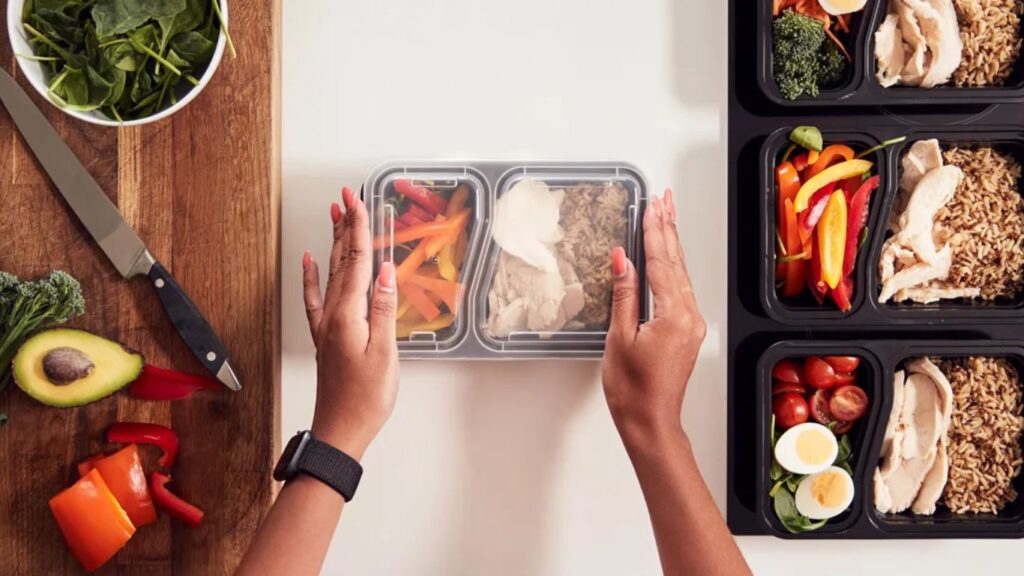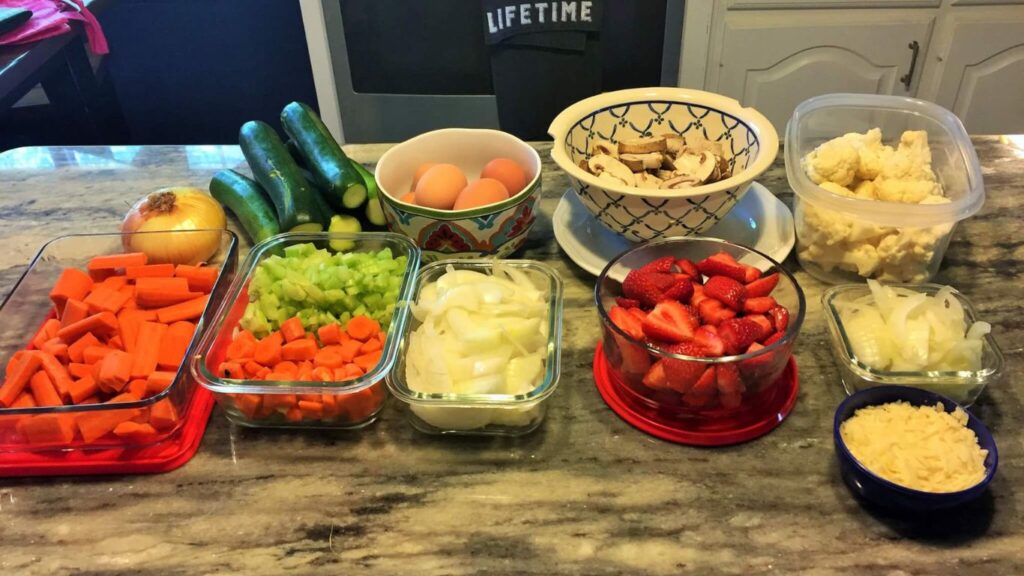Eating well is a cornerstone of good health, yet it often feels like a daunting task. The key to success is meal planning – a strategy that not only supports your fitness and wellness goals but also simplifies your daily routine. This comprehensive guide walks you through the process of meal planning for a healthier lifestyle.
Understanding the Basics of Nutritious Eating
A healthy diet is the foundation of good health and fitness. But what does it really mean to eat healthily? It’s not just about cutting calories or avoiding fats; it’s about understanding the nutritional value of foods and how they affect your body.
Proteins are essential for muscle repair and growth, making them crucial for anyone involved in regular physical activity. Carbohydrates are the body’s main energy source, particularly important for endurance activities. Fats, often misunderstood, are vital for hormone production and nutrient absorption. Vitamins and minerals, though needed in smaller amounts, play significant roles in everything from bone health to immune function.
Equally important is debunking nutrition myths. For instance, not all fats are bad, and carbs are not inherently weight-gain culprits. Understanding these basics will empower you to make informed decisions about your diet.
Before diving into meal planning, it’s crucial to understand what constitutes a healthy diet. Balanced meals should include a mix of:
- Proteins: Lean meats, fish, legumes, and tofu.
- Carbohydrates: Whole grains, fruits, and vegetables.
- Fats: Healthy fats like avocados, nuts, and olive oil.
- Vitamins and Minerals: A varied diet usually covers these.
Setting Personal Health Goals
Your diet should align with your personal health goals. Are you aiming to lose weight, build muscle, or improve your endurance for a marathon? Each goal requires a slightly different dietary approach.
For weight loss, creating a calorie deficit is key, but it’s important to do so in a healthy, sustainable way. For muscle building, your focus should be on consuming enough protein and calories to support muscle repair and growth. Endurance athletes need a diet rich in carbohydrates to ensure a steady energy supply.
But remember, balance is key. Depriving yourself or overindulging can both be detrimental to your health and fitness goals.

Step-by-Step Guide to Meal Planning
- Assess Your Dietary Needs: Start by determining your daily calorie needs based on your lifestyle, activity level, and fitness goals. Use online calculators or consult a nutritionist.
- Plan Your Meals: Allocate time each week to plan your meals. Include breakfasts, lunches, dinners, and healthy snacks. Aim for variety to ensure a range of nutrients.
- Make a Shopping List: Based on your meal plan, create a shopping list. This helps avoid impulse buys and ensures you have all necessary ingredients.
- Prep in Advance: Meal prep can save time and reduce stress. Dedicate a few hours each week to prepare and portion meals.
- Monitor and Adjust: Be flexible and adjust your plan as needed. Listen to your body and make changes if you’re not meeting your health goals.
Balanced Meal Ideas for a Week
To get you started, here’s a sample one-week meal plan:
- Monday:
- Breakfast: Oatmeal with berries and almonds.
- Lunch: Grilled chicken salad with mixed greens.
- Dinner: Baked salmon with quinoa and steamed broccoli.
- Snacks: Greek yogurt, carrot sticks.
- Tuesday:
- Breakfast: Smoothie with spinach, banana, and protein powder.
- Lunch: Turkey and avocado wrap with whole-grain tortilla.
- Dinner: Stir-fried tofu with vegetables and brown rice.
- Snacks: Apple slices, hummus.
- Wednesday:
- Breakfast: Whole-grain toast with peanut butter and banana.
- Lunch: Quinoa salad with chickpeas and mixed veggies.
- Dinner: Grilled shrimp with asparagus and sweet potato.
- Snacks: Cottage cheese, cucumber slices.
- Thursday:
- Breakfast: Greek yogurt with granola and honey.
- Lunch: Lentil soup with a side of mixed greens.
- Dinner: Baked chicken breast with roasted Brussels sprouts and farro.
- Snacks: Mixed nuts, berries.
- Friday:
- Breakfast: Scrambled eggs with spinach and whole-grain toast.
- Lunch: Tuna salad on mixed greens with a vinaigrette.
- Dinner: Beef stir-fry with vegetables and brown rice.
- Snacks: Sliced pear, cheese stick.
- Saturday:
- Breakfast: Protein pancakes with fresh fruit.
- Lunch: Chicken Caesar salad with whole-grain croutons.
- Dinner: Grilled tilapia with mixed vegetables and quinoa.
- Snacks: Trail mix, bell pepper slices.
- Sunday:
- Breakfast: Veggie omelet with whole-grain toast.
- Lunch: Black bean burger with sweet potato fries.
- Dinner: Roast beef with roasted carrots and a side salad.
- Snacks: Greek yogurt, an orange.

Tips for Staying on Track
- Stay Hydrated: Drink plenty of water throughout the day.
- Listen to Your Body: Adjust portion sizes based on hunger and fullness cues.
- Limit Processed Foods: Focus on whole, unprocessed foods for optimal nutrition.
- Enjoy Treats in Moderation: It’s okay to indulge occasionally. The key is moderation.
The Role of Exercise in Wellness
While diet is crucial, exercise is an equally important aspect of wellness. Aim for a mix of cardiovascular, strength, and flexibility exercises. Regular physical activity boosts mood, improves cardiovascular health, and complements your healthy eating plan.
Conclusion
Meal planning is a powerful tool for achieving your fitness and wellness goals. By taking the time to plan, you can ensure that your body gets the necessary nutrients it needs to thrive. Remember, it’s important to emphasize that a healthy diet is not just a temporary fix, but a lifelong journey towards better health and well-being. The guide has shown that with a little planning and understanding of nutrition, anyone can create meals that are both delicious and nourishing. Remember, the key to success is consistency and balance.

Incorporating a variety of foods, rich in different nutrients, ensures a well-rounded diet that supports fitness goals and overall health. It’s also crucial to listen to your body and make adjustments as needed. Healthy eating should not be a source of stress, but a step towards a happier and healthier life. By applying the principles and tips from this guide, readers are well-equipped to embark on their own path to a healthier lifestyle through mindful meal planning. Remember, every small step counts on this rewarding journey to wellness.
Also read: Pre-Workout Nutrition for Different Types of Exercise
